I’ve been riding my Boom Vader Gen 2 motorcycle ( Boom Vader (Chinese Grom Clone) Review (First Ride) ) more often lately than my TaoTao TBR7 motorcycle ( My TaoTao TBR7 One Year Motorcycle Review! ). Since I had so many overheating issues with my TaoTao TBR7 motorcycle engine, I am very concerned I might go down the road with my Boom Vader.
So I keep in mind and look for any air-cooled engine overheating symptoms.
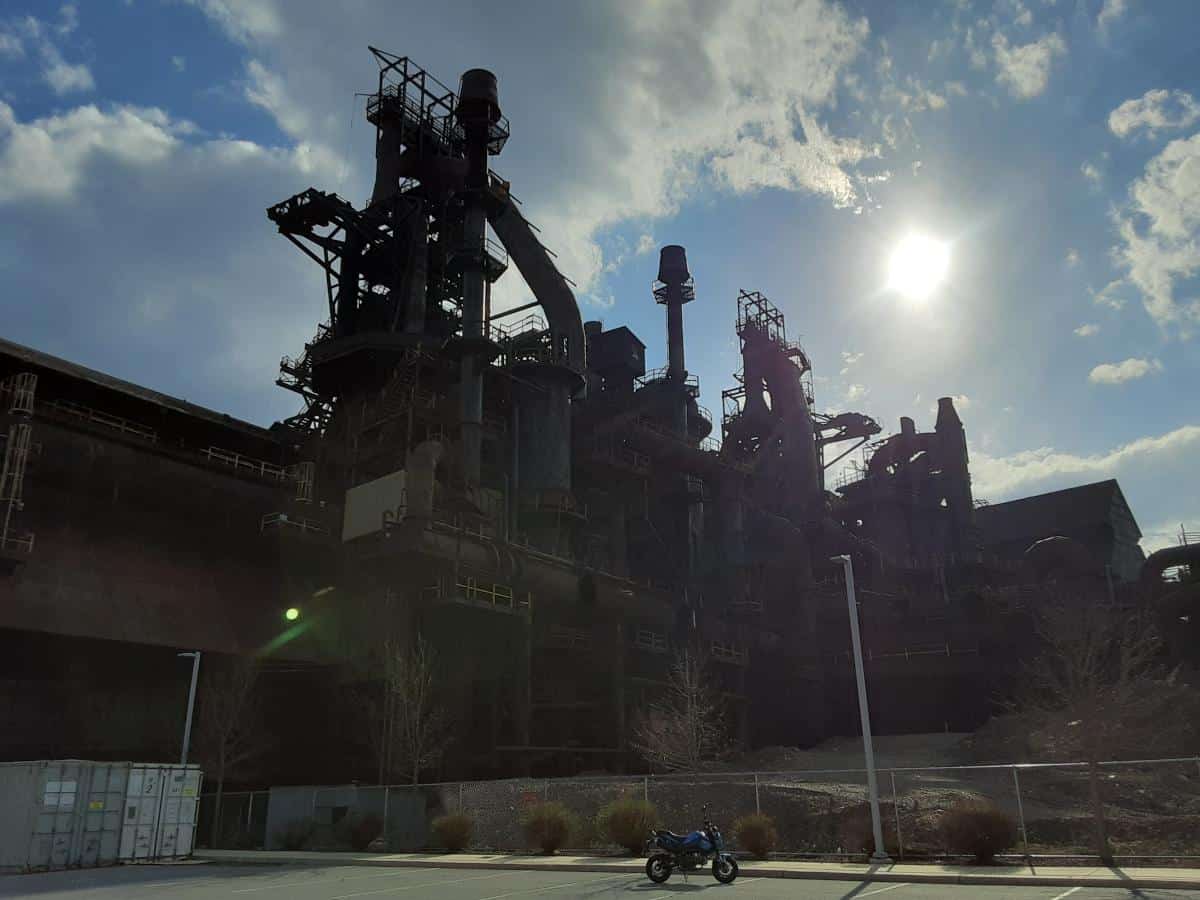
I’ve had some problems with my TaoTao TBR7 motorcycle overheating( Overheated Motorcycle Engine Problems ) due to constantly pushing the little 229cc air-cooled engine harder and harder with upgrades and longer rides.
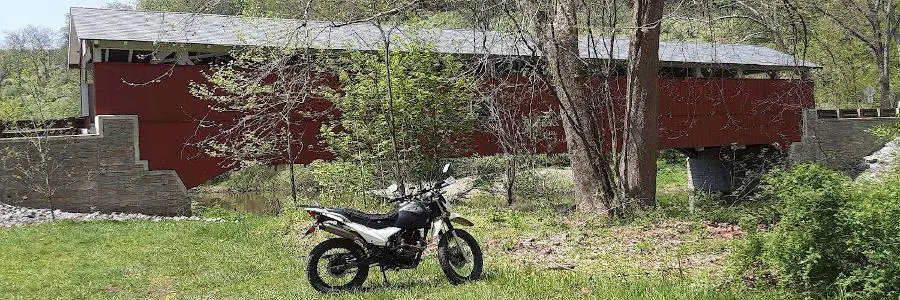
I have managed to increase the amount of fuel going into the TBR7’s engine with carburetor upgrades( TBR7 Carburetor Upgrade and TBR7 Nibbi Carburetor Installation Instructions ) and flowed more air and fuel through the single-engine cylinder by reducing restrictions with an air-pod( TBR7 Air Filter Pod Replacement ) and low resistance exhaust.
My TBR7 motorcycle is doing highway speeds when I suspect it was never made to work hard enough to do American highway speeds.
Amazingly, the little engine keeps going. To help, I upgraded the cooling capacity by adding an oil cooler( Motorcycle Oil Cooler Installation For My TaoTao TBR7 ). This way, more surface area transfers heat from the engine(in this case, the engine oil) and helps it stay cooler( An Oil-Cooled Motorcycle Engine? ).
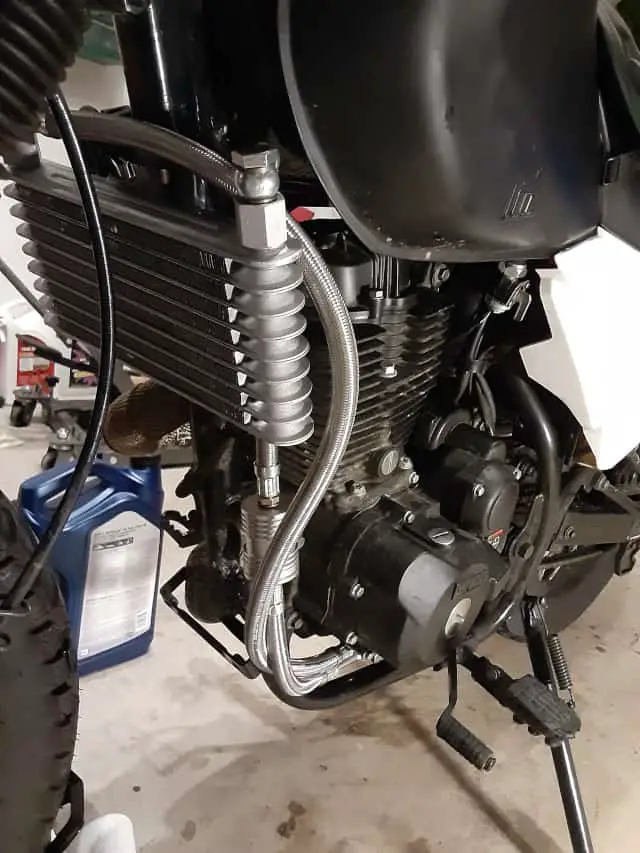
How Do I Know If My Air-Cooled Engine Is Overheating?
Big picture answer, your motorcycle isn’t having right.
Any changes in the effort to shift gears, loss of power, or strong “oil” smell are tip-offs to think to yourself, am I operating my motorcycle in such a way to cause overheating?
Having a questioning attitude about why your motorcycle might not be acting right and understanding the principles behind why air-cooled engines are more susceptible to overheating is a good thing.
Maintaining a big-picture approach to keeping your motorcycle running at its peak condition is good. Now will be breaking down the symptoms of an overheated air-cooled engine.
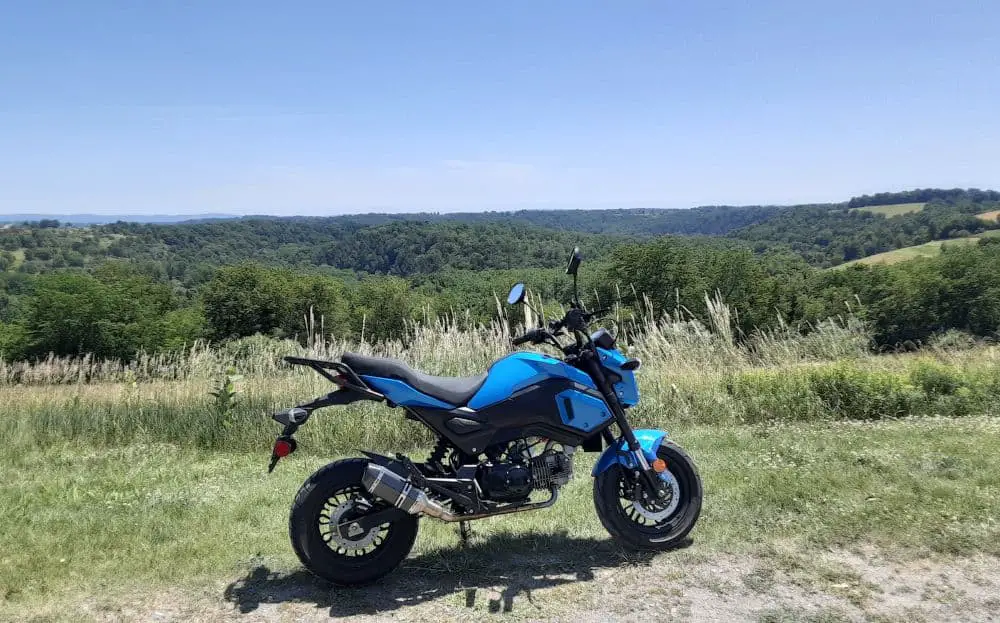
Air-Cooled Engine Overheating Symptoms List:
1.- Loss of Engine Power
When the motorcycle engine is overheating, the engine’s operating temperature is beyond its design parameter. Just as a cold engine is difficult to start without taking steps to increase the fuel/air ratio, so is a very hot engine that is difficult to keep operating at peak performance.
So the engine will put out less power, and you should feel this as a slow response to throttle demand and sluggish performance.
One time I noticed my RPM dropped. The TBR7 motorcycle is a carbureted single-cylinder engine. The idle speed on a carbureted motorcycle is controlled by a screw that holds the throttle at a minimum open position. So as the overheating motorcycle engine starts losing power, the carburetor can’t adjust for the lowering RPMs, so the RPMs lower.
Think is there a reason why my air-cooled engine might be overheating? Am I operating the engine at a low speed(reduced airflow over the engine and cooling fins), idling too long at a light, overly dirty engine?
Regardless of the causes for a loss of engine power, something is wrong.
2.- Increase In Unusual Engine Noises.
I noticed when I would ride the TBR7 motorcycle on the highway, then exit to a stop, the motorcycle was still hot from the hard ride, but with no airflow over the engine to cool off, the hot sounds started occurring.
Metal ‘pinging’ was noticeable. I suspect this was the joints in the exhaust system expanding and moving as parts lost their cooling, and engine exhaust temperatures were transferred into them.
Not an obvious sign of overheating, but unusual sounds from any motorcycle would make the rider question what is going on.
3.- Strong oil smells.
When my motorcycle engine is hot, the smell of overheated oil, which you might notice in a fast food place, is very noticeable. When you state operating the engine oil at temperatures outside the design range, the oil vaporizes and becomes more airborne.
An increase in airborne oil is what I smell when my overheated engine smells like overcooked oil.
4.- Difficulty Shifting, Changing Gears.
Chonda bikes like the TaoTao TBR7 dual-sport and Boom Vader Gen 2 125cc Grom Clone motorcycles are not known for precision manufacturing processes( Boom Vader / Grom Clone Assembly Problems ).
When brand new, the gears are difficult to shift, and once shifting feel ‘clunky.’
After a while, the shifting improves (TaoTao TBR7 One Year Motorcycle Review! & Boom Vader (A Grom Clone) Latest Motorcycle Review @ 400 Miles! ), but this is a long process requiring many hours/miles of riding and several oil changes.
So if the shifting characteristics of the motorcycle change, especially become more difficult, there is a rapidly changing condition in the bike, and the bike behaves worse than expected.
Sudden difficulty in shifting gears hints that something is wrong and needs to be addressed immediately. Usually something wrong is a good indications for me to do an oil change( How Often Do You Need to Change Your Motorcycle’s Oil? )
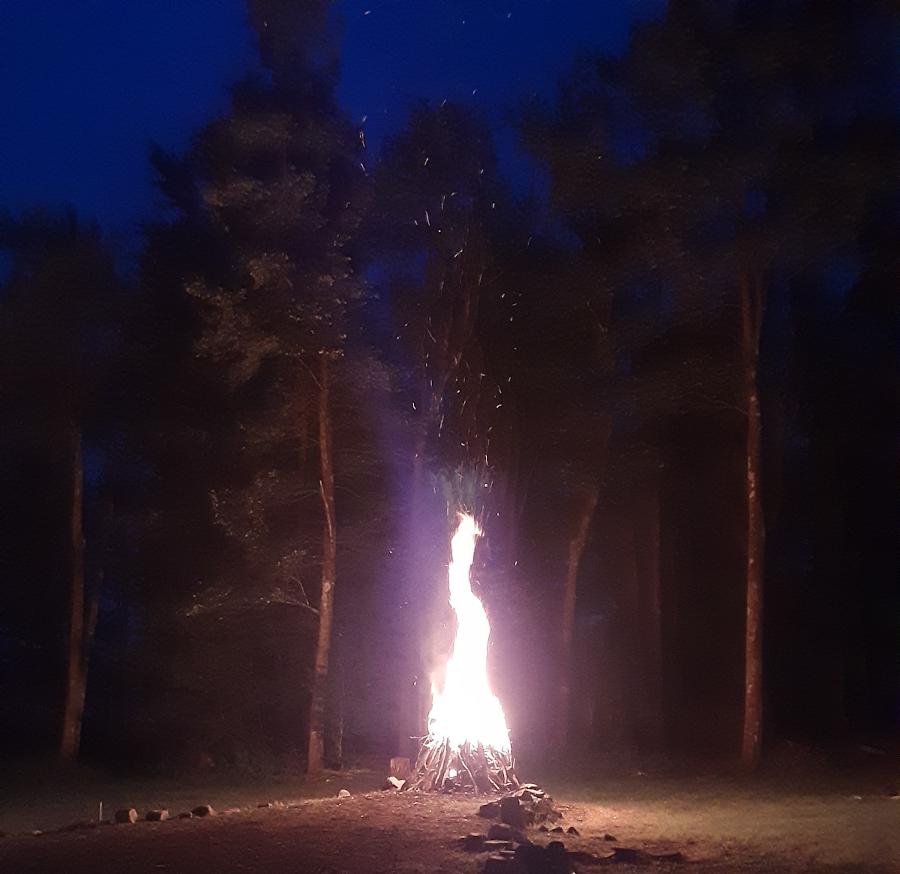
What Happens If Air-cooled Motorcycle Engine Overheats?
The symptoms of an overheated engine(loss of power, overheated oil smell, abnormal metal noises, and difficulty shifting) are all general early conditions that an overheated air-cooled engine can cause.
The longer you run the motorcycle engine in an overheated condition, it can lead to engine failure. The overheated oil smell is a warning sign the oil isn’t working within its standard operating temperatures.
The oil can become very thin and soon could lead to no metal-to-metal protection. Engine parts running with direct metal-to-metal contact will rapidly overheat and fail. Moving parts can overheat so much that spot welding can occur, and those parts will no longer move.
So what can happen to an air-cooled motorcycle engine overheating? Well, the motorcycle engine can seize.
Why Would An Air-cooled Motorcycle Engine Overheat?
A motorcycle engine running within its operating temperatures is a balance between creating heat and removing heat.
Like all internal combustion engines, heat is mainly created from fuel burning, with additional heat added by fluid friction of oil lubricating moving engine parts.
Now, heat removal on an air-cooled motorcycle engine is ultimately air.
To aid in cooling the air-cooled engine, an increase in the amount of surface area for air to make contact with is created by the creation of cooling fins.
These fins increase the surface area for the outside air to make contact with the engine’s hottest parts, mainly around the engine cylinder. In this area, fuel is burnt, with additional locations around the engine casing, where the engine oil is collected before recirculating around the engine.
To help with moving air over the air cooling fins, I noticed the cooling fins are aligned so that air will move over them in directions expected when the motorcycle is actually in motion. Remember the importance of fin alignment to air movement for later.
How Do You Cool An Overheated Air-cooled Motorcycle Engine?
Again, maintaining the motorcycle engine’s operating temperature band, you must maintain a good balance between heat generation and heat removal.
1.- Increase Heat Removal From The Motorcycle Engine.
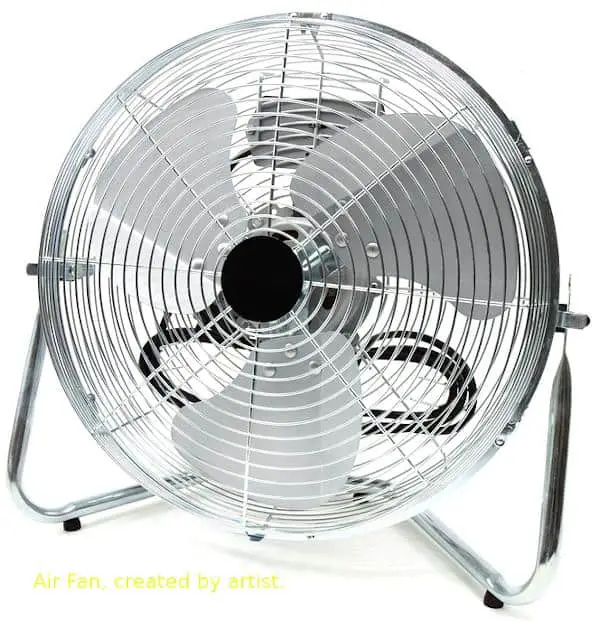
Being an air-cooled engine, more airflow over the cooling fins will increase the heat removal process. Remember how I mentioned I noticed cooling fins are aligned with a moving motorcycle’s airflow? Well flow more air over those fins, and the heat removal increases.
So, keeping the bike moving forward will move air over the engine, and its cooling fins, removing heat.
As expected, the likelihood of an air-cooled motorcycle engine overheating with improved heat removal is reduced. Avoid riding too slow or remaining stopped too long.
Lane splitting has been argued is good for helping a motorcycle remain cool at stopped intersections since moving slowly between cars keeps air flowing over the engine versus staying stopped at these intersections. I’m not sure if this is true, but then I live in a state where lane splitting isn’t legal. If you have an opinion, please comment below.
2.- Reduce The Amount Of Heat Generated.
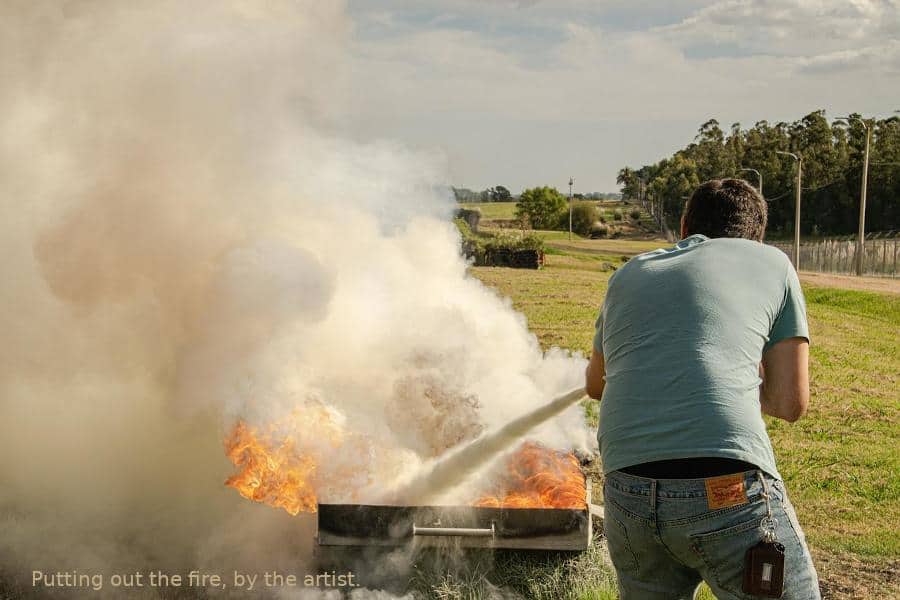
Fuel-burning is a significant source of heat generated in an internal combustion engine. If you can reduce the amount of fuel burnt over time, the amount of heat generated will be reduced.
Here are ways to reduce engine heat generated:
a.- Lower The Engine Idle Speed.
If you are idling at an intersection, ensure your motorcycle’s idle speed is appropriately set and maybe low in the normal RPM band. This way, the number of combustion cycles per minute is reduced.
My TBR7 motorcycle’s Racing Nibbi Carburetor (PE30) has a large idle speed adjuster knob on the side of the carburetor, and I can adjust it based on how the engine idles along the ride.
For my Boom Vader Gen 2, I have a Mikuni Carburetor (VM22), which has an idle screw. Unlike my TBR7 motorcycle’s Nibbi Carb, I need a screwdriver to adjust my Boom Vader’s carb. Not as easy as the Nibbi Carb, but it can be done if the idle speed moves around during a ride.
b.- Don’t Rev Your Motorcycle Engine At Stops.
Again, increasing the RPMs increases the number of combustion cycles your engine performs per minute. From the increased burning of fuel is an increased generation of heat.
Reduce the RPMs, and reduce the heat generated.
c.- Stop The Motorcycle Engine At Stops.
Let’s face it, even an adequately set low engine idle speed still generates heat. Stop the engine if you are at an intersection for a long time.
Stop the motorcycle engine stopped the generation of heat.
I used the handlebar-mounted kill-switch to stop the engine, and once it stopped, I reset the kill-switch. This way, my lights remain on since the ignition is still on, and when the light changes, I can quickly restart the engine to drive away. Seems to work with helping keep my motorcycle engine avoid overheating in the urban driving environment.
How Do You Prevent Overheating In An Air-Cooled Motorcycle Engine?
I talked about how you can cool the air-cooled engine while running, but there are additional steps you can take to help prevent overheating your air-cooled motorcycle engine.
For combustion heat to exit the engine, heat generated in the cylinder moves to the cylinder walls. That heat continues to travel through the engine’s metal into the cooling fins. If the fins are dirty (oil, dirt, mud, etc.), that dirt can interfere with the movement of heat from the cooling fins to the air.
Dirt and grime can act like blankets trapping heat in the engine. So clean off dirt and grim build-up as needed to keep a motorcycle engine running cooler.
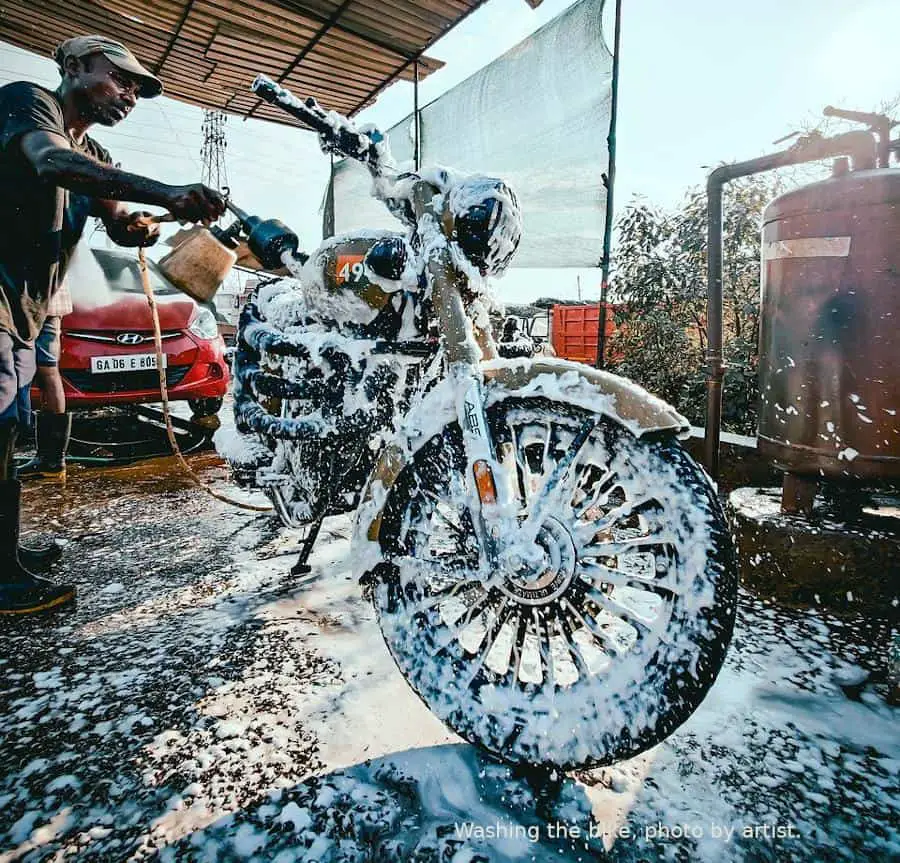
What Now? Less Overheated Air-Cool Motorcycle Engines?
I hope so.
I had a severe problem with metal shavings found in my TaoTao TBR7 motorcycle engine’s oil( Metal Shavings In The Motorcycle Oil!!! ), and even after flushing out the metal shavings( Flush Metal Shavings From A Motorcycle Engine? ), I found more shavings when I replaced the motorcycle clutch( Hawk 250 & TBR7 Motorcycle Clutch Replacement ).
I didn’t find any more metal shavings with later oil changes( TBR7 Oil Change ), but I am still concerned I did some damage during one engine overheating event.
Hey, if you have had experiences with your air-cooled motorcycle overheating, please feel free to share your thoughts in the comment section.
I appreciate the insight to help keep my motorcycles running well long into the future. In the meantime…
Ride Safe, Ride Cool, Ride Fun!

Hi I’m Tom, A New Motorcycle Rider and Blog Author.
I am a new rider(Pa Learners Permit at the end of 2020, and I received a Pa Motorcycle License in 2021 after passing a Motorcycle Safety Course).
I bought my first motorcycle, a TaoTao TBR7, at the beginning of 2021 and have been doing upgrades on that motorcycle since.
I added to my motorcycle collection by buying a Boom Vader Gen 2 in 2022, and that Grom-Clone motorcycle has been upgraded by me as well.
I continue to ride my Boom Vader Gen 2 motorcycle as well as my TaoTao TBR7 dual-sport bike.
Read more on my About Me page.
Fun Fact: I’ve only been on one group ride.
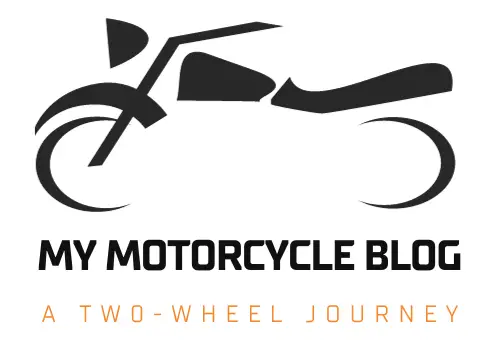

bike off rd year and half the start of it was loss of power,a has just looked at it for me now it seems ok ,touch wood he put it down to electrical fault . after reading your symptoms there was always something in the back of my mind that it had something to do with overheating,but there you go,intresting read
Thanks for stopping by and commenting. You are much appreciated.
So, my motorcycle overheating issues were an afterthought. As I rode the bike, it built up more heat, but being air-cooled, as long as I rode, I was good.
When I came to a stop, I felt the bike’s engine cooking my leg, but I thought it was OK. I later learned that coming to a complete stop is not good for an air-cooled motorcycle.
Although heat generation is slowed, residual heat from the engine still moves through the engine walls to the cooling fins. Now without airflow, the fins heat up, and the heat moves slower, and with the engine still running, even at idle, heating continues.
This overheating issue with standing-still motorcycles is the argument I was told for lane splitting (https://en.wikipedia.org/wiki/Lane_splitting); keeping airflow over the air-cooled engine is important.
I’m still new to motorcycles, and with air-cooled engines, you figure they are simple, but not so. Problems can occur with a passive cooling system too.
Thanks for stopping by!
Tom